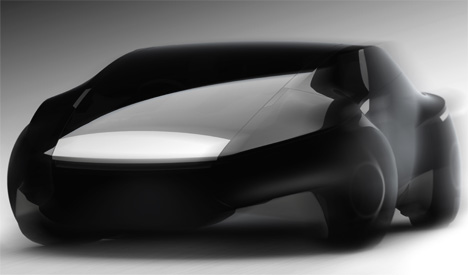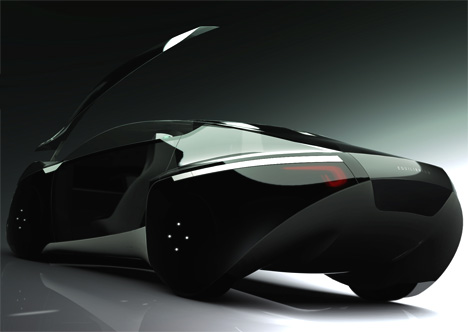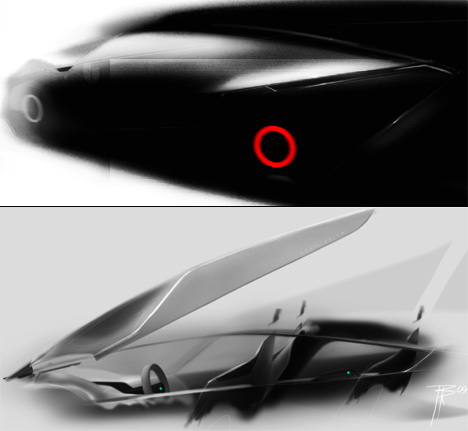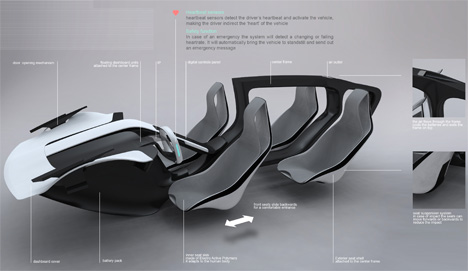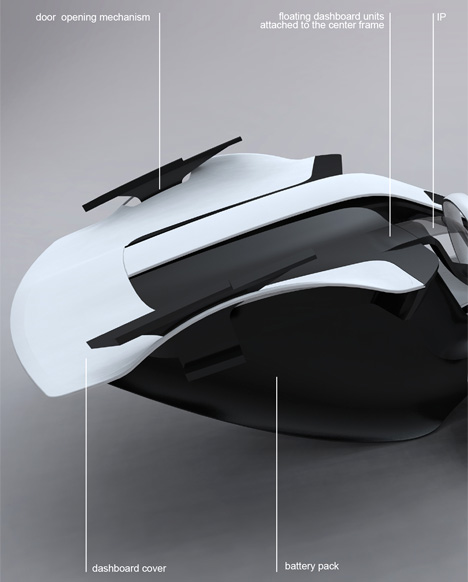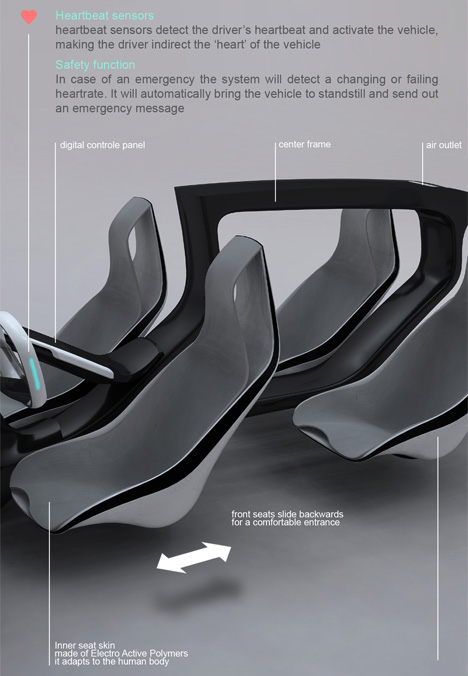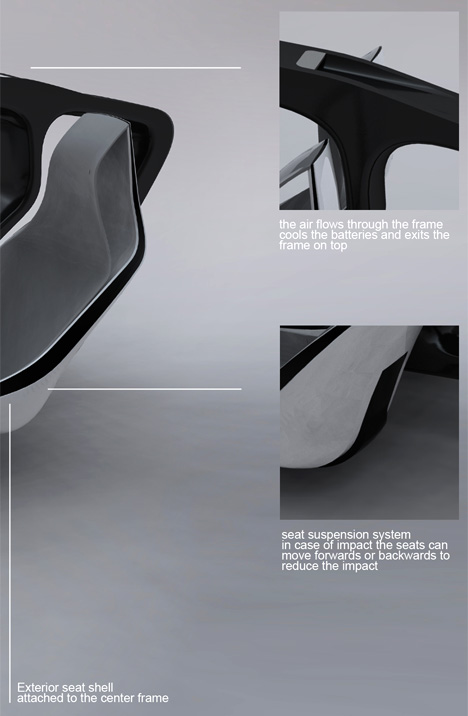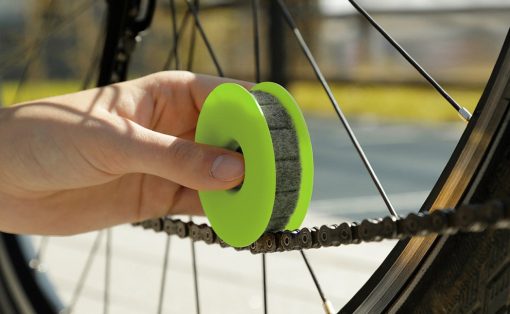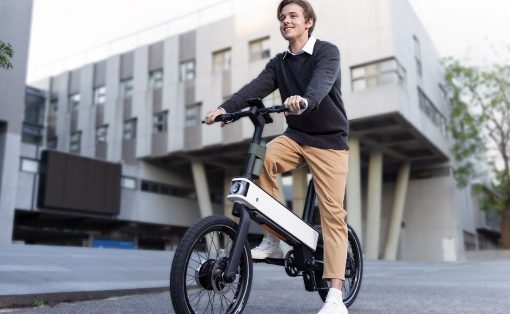As we move forward in our increasingly mass produced and technological world, there is a certain nostalgia for what many critics say we’ve lost. We just need to find new ways to personalize and humanize the products we create. The Equilibrium (EQ) car uses artificial intelligence to engage us by generating the illusion of life and individual personality. Tho the cars are mass produced, no two are alike.
Lets close our eyes. Envisage a high tech world not too distant in the future. It’s morning and you’re getting ready for work; a day like any other. You step in the garage where a dark, almost black figure rests in the corner. As you approach it illuminates from within, pulsing like the slow rhythmic pace of breathing. The vehicle is alert, it senses and recognizes your presence. It knows you’re the owner and goes into standby mode. The door handles reveal themselves to you. The floating seats adjust, comfortably cradling your body. As you place both hands on the steering wheel, biometric sensors activate the vehicle into full power mode. You’re ready to go.
The idea is intriguing and not difficult to imagine. For years automotive designers have thought of ways to create experiences within a car to simulate a living object. Personalization is key to creating an emotional attachment with anything inanimate. The Equilibrium takes it a step further by utilizing some key technologies not yet invented but it’s only a matter of time.
Take for example the exterior surface – covered in what the designer dubs “rubber metal.” Thanks to nanotechnology, it’s flexible and rigid. The wheels are even covered and steering is achieved by manipulating the material to pull on the center axis of each wheel hub. On the outside it gives the vehicle a smooth continuous form uninterrupted by seams. The material can even move from opaqueness to transparency, hinting to the owner what’s inside waiting as they approach.
Two electric engines are located in the rear wheels for space efficiency and for weight distribution. All interior elements float by using a connection to a center frame. This creates a light and spacious expression. At the same time it provides a feeling of safety for the passengers; a strong central object for protection.
The battery pack is located in the front of the vehicle for weight distribution. To cool the batteries, air flows from a front air intake along the batteries and through the frame to an air outlet on the top.
The seats consist of two parts; an external ‘shell’ and soft inner skin. The skin is made of Electro Active Polymers, and adapts to the drivers body. Electricity can make the surfaces stretch and change shape.
The steering wheel has heartbeat sensors to activate the vehicle from stand-by to full power as soon as it detects the driver’s heartbeat. This has a safety element as well. As the driver gets tired while driving, the vehicle will detect a lower heart rate and react by blowing fresh air inside. But in more serious situations (heart attack) it can automatically bring the vehicle to standstill; park it along the road and send out an alarm message. By satellite, the exact location of the vehicle can be traced.
Designer: Bob Romkes
